Full text
PDF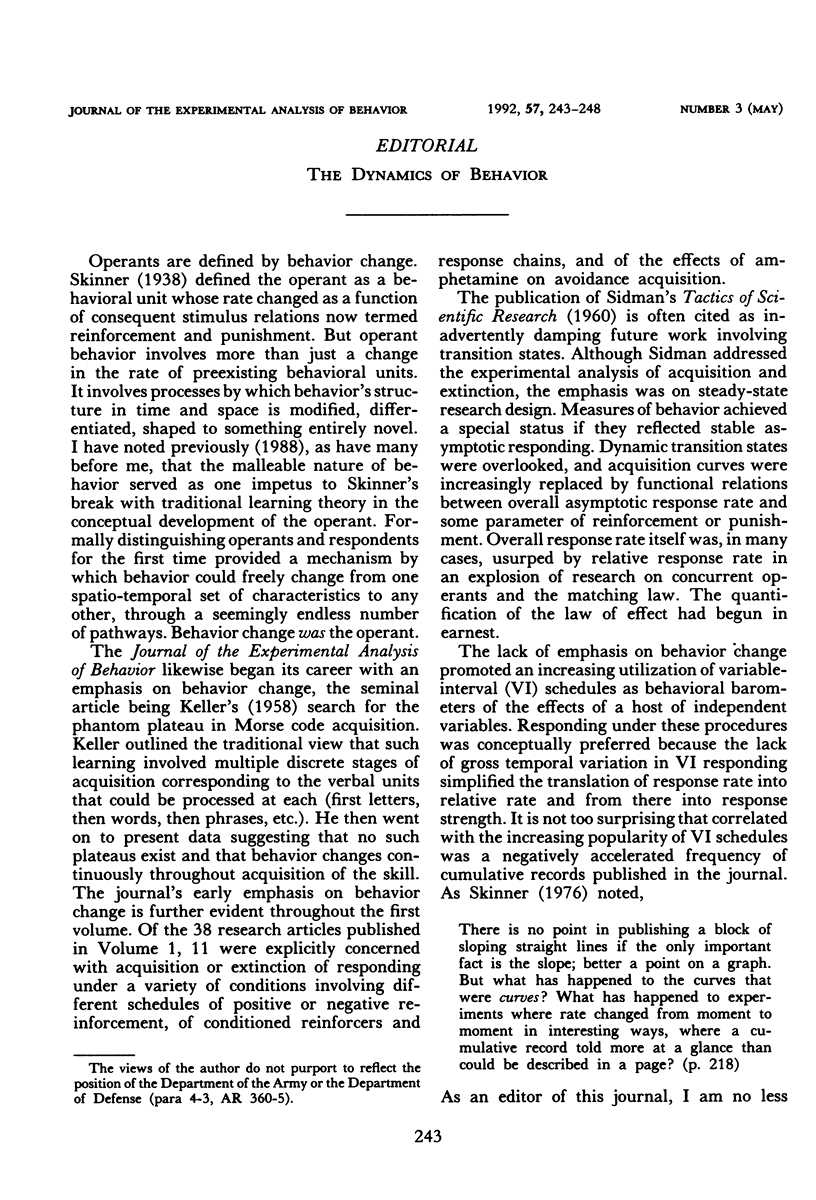
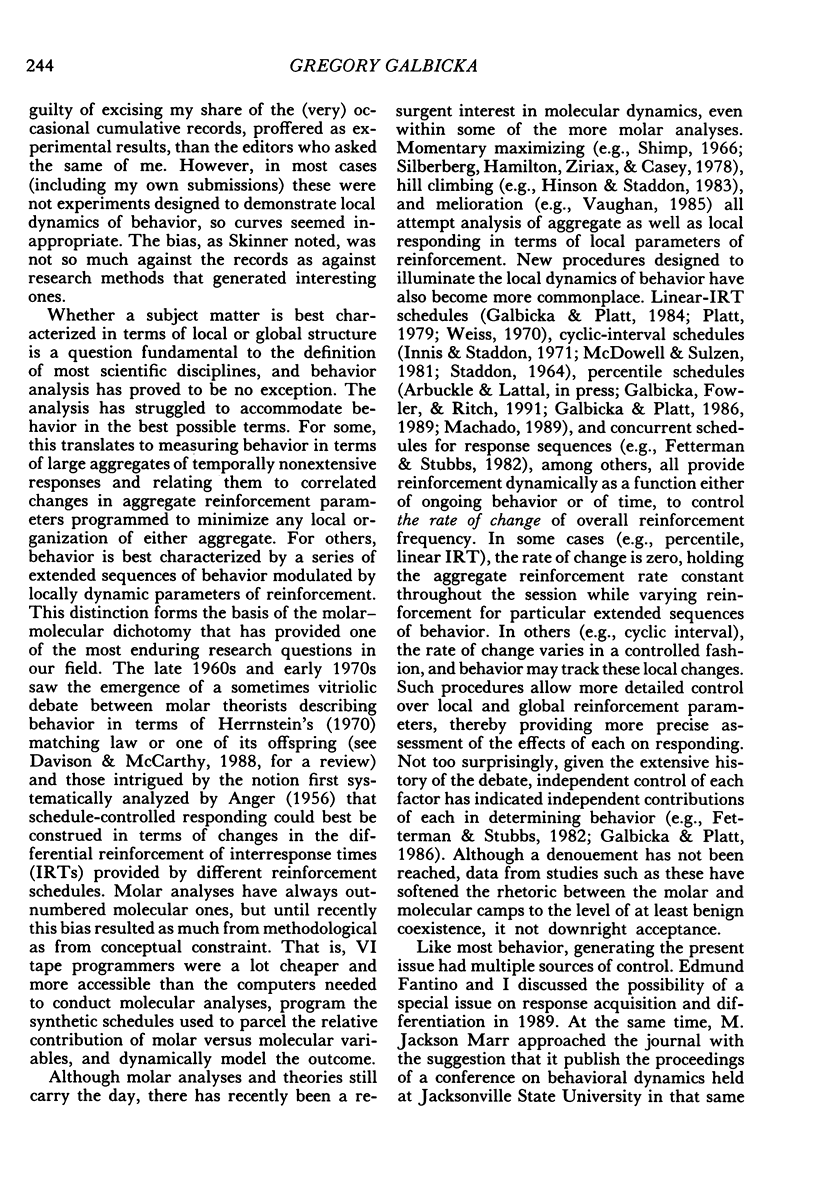
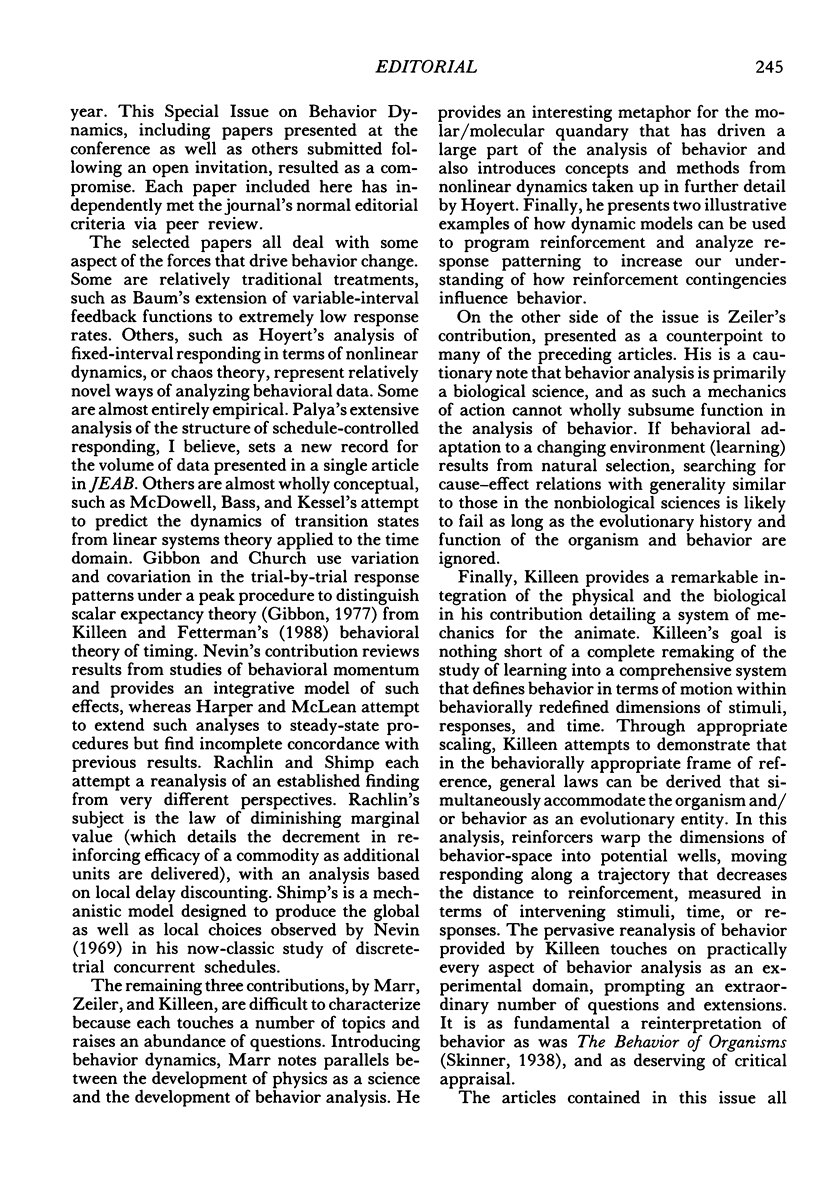
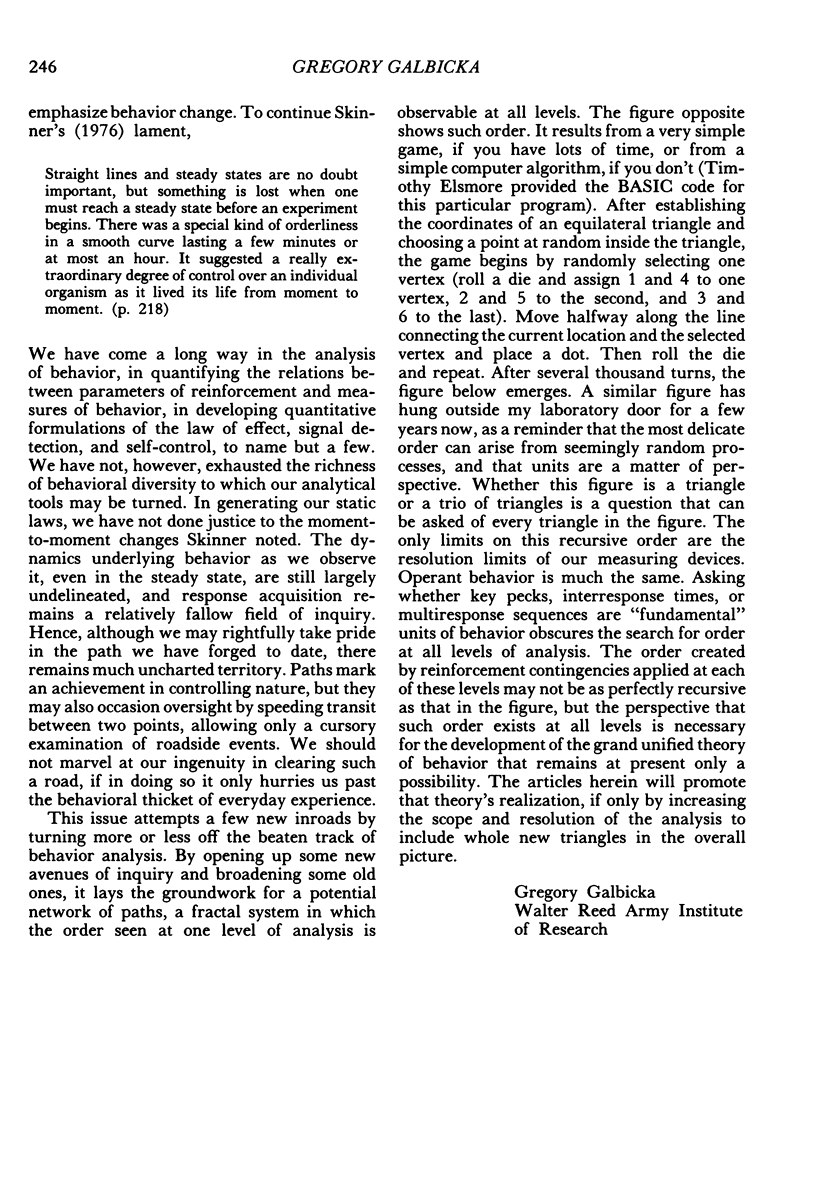
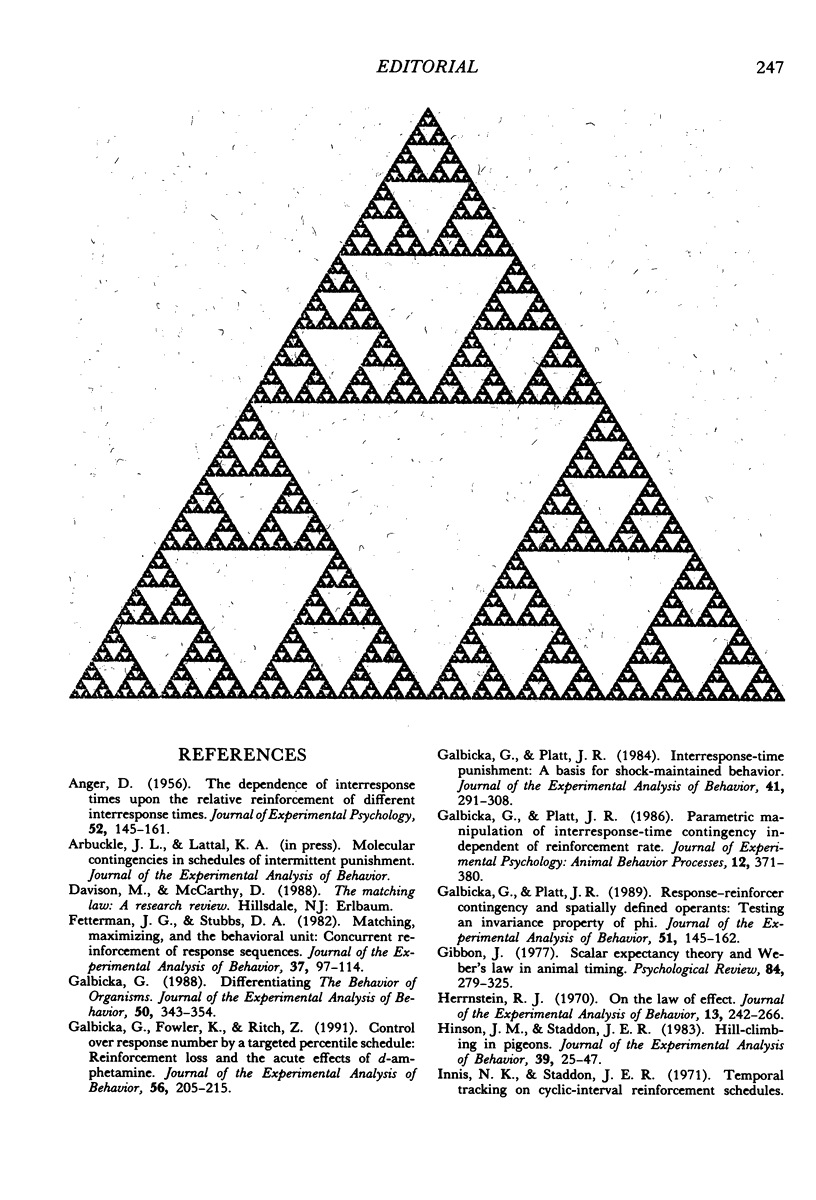
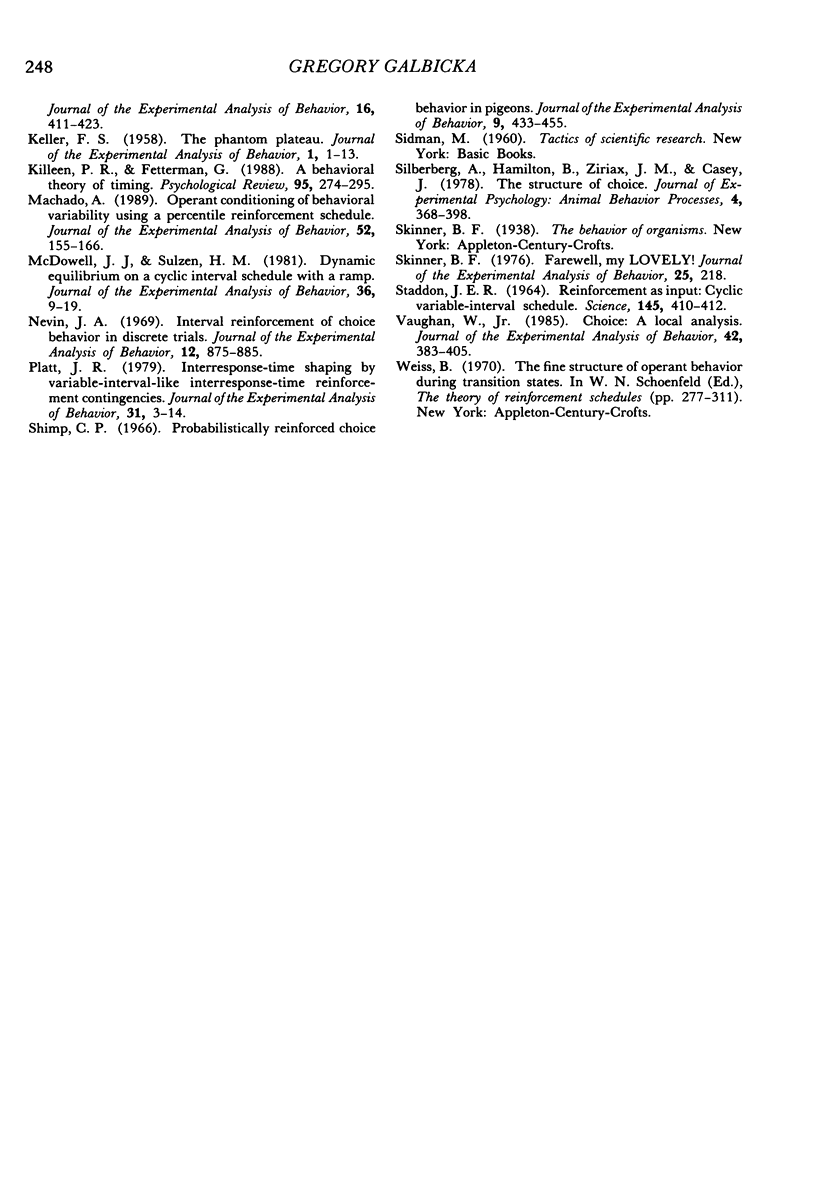
Selected References
These references are in PubMed. This may not be the complete list of references from this article.
- ANGER D. The dependence of interresponse times upon the relative reinforcement of different interresponse times. J Exp Psychol. 1956 Sep;52(3):145–161. doi: 10.1037/h0041255. [DOI] [PubMed] [Google Scholar]
- Fetterman J. G., Stubbs D. A. Matching, maximizing, and the behavioral unit: concurrent reinforcement of response sequences. J Exp Anal Behav. 1982 Jan;37(1):97–114. doi: 10.1901/jeab.1982.37-97. [DOI] [PMC free article] [PubMed] [Google Scholar]
- Galbicka G. Differentiating the behavior of organisms. J Exp Anal Behav. 1988 Sep;50(2):343–354. doi: 10.1901/jeab.1988.50-343. [DOI] [PMC free article] [PubMed] [Google Scholar]
- Galbicka G., Fowler K. P., Ritch Z. J. Control over response number by a targeted percentile schedule: reinforcement loss and the acute effects of d-amphetamine. J Exp Anal Behav. 1991 Sep;56(2):205–215. doi: 10.1901/jeab.1991.56-205. [DOI] [PMC free article] [PubMed] [Google Scholar]
- Galbicka G., Platt J. R. Interresponse-time punishment: a basis for shock-maintained behavior. J Exp Anal Behav. 1984 May;41(3):291–308. doi: 10.1901/jeab.1984.41-291. [DOI] [PMC free article] [PubMed] [Google Scholar]
- Galbicka G., Platt J. R. Parametric manipulation of interresponse-time contingency independent of reinforcement rate. J Exp Psychol Anim Behav Process. 1986 Oct;12(4):371–380. [PubMed] [Google Scholar]
- Galbicka G., Platt J. R. Response-reinforcer contingency and spatially defined operants: testing an invariance property of phi. J Exp Anal Behav. 1989 Jan;51(1):145–162. doi: 10.1901/jeab.1989.51-145. [DOI] [PMC free article] [PubMed] [Google Scholar]
- Hinson J. M., Staddon J. E. Hill-climbing by pigeons. J Exp Anal Behav. 1983 Jan;39(1):25–47. doi: 10.1901/jeab.1983.39-25. [DOI] [PMC free article] [PubMed] [Google Scholar]
- KELLER F. S. The phantom plateau. J Exp Anal Behav. 1958 Jan;1:1–13. doi: 10.1901/jeab.1958.1-1. [DOI] [PMC free article] [PubMed] [Google Scholar]
- Killeen P. R., Fetterman J. G. A behavioral theory of timing. Psychol Rev. 1988 Apr;95(2):274–295. doi: 10.1037/0033-295x.95.2.274. [DOI] [PubMed] [Google Scholar]
- Machado A. Operant conditioning of behavioral variability using a percentile reinforcement schedule. J Exp Anal Behav. 1989 Sep;52(2):155–166. doi: 10.1901/jeab.1989.52-155. [DOI] [PMC free article] [PubMed] [Google Scholar]
- McDowell J. J., Sulzen H. M. Dynamic equilibrium on a cyclic-interval schedule with a ramp. J Exp Anal Behav. 1981 Jul;36(1):9–19. doi: 10.1901/jeab.1981.36-9. [DOI] [PMC free article] [PubMed] [Google Scholar]
- Nevin J. A. Interval reinforcement of choice behavior in discrete trials. J Exp Anal Behav. 1969 Nov;12(6):875–885. doi: 10.1901/jeab.1969.12-875. [DOI] [PMC free article] [PubMed] [Google Scholar]
- Platt J. R. Interresponse-time shaping by variable-interval-like interresponse-time reinforcement contingencies. J Exp Anal Behav. 1979 Jan;31(1):3–14. doi: 10.1901/jeab.1979.31-3. [DOI] [PMC free article] [PubMed] [Google Scholar]
- STADDON J. E. REINFORCEMENT AS INPUT: CYCLIC VARIABLE-INTERVAL SCHEDULE. Science. 1964 Jul 24;145(3630):410–412. doi: 10.1126/science.145.3630.410. [DOI] [PubMed] [Google Scholar]
- Skinner B. F. Farewell, My LOVELY! J Exp Anal Behav. 1976 Mar;25(2):218–218. doi: 10.1901/jeab.1976.25-218. [DOI] [PMC free article] [PubMed] [Google Scholar]
- Vaughan W. Choice: A local analysis. J Exp Anal Behav. 1985 May;43(3):383–405. doi: 10.1901/jeab.1985.43-383. [DOI] [PMC free article] [PubMed] [Google Scholar]


